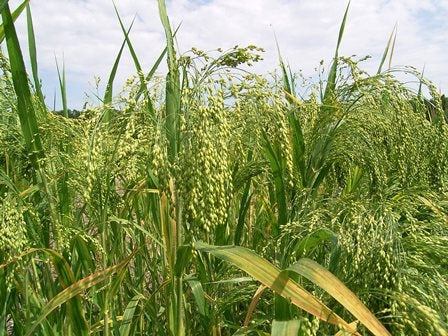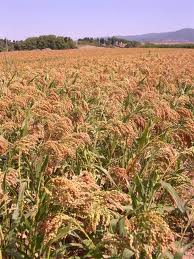MILLET - 45g
Have a question?

MILLET - 45g
Dettagli
Scientific name: Panicum miliaceum
Family: Poaceae (Graminacee)
Brief history and botanical notes on the plant
Millet is an annual herbaceous plant, belonging to the Poaceae family also known as Graminaceae.
The cultivation of millet dates back to prehistoric times and was used for human consumption, because it was and is among the most nutritious and digestible cereals and should be consumed hulled.
It is also characterized by a long shelf life, in fact it was thanks to this cereal that Venice was saved from starvation in 1378.
It is currently still cultivated in Asia and Africa, while in Western countries cultivation is sporadic.
In Italy, unfortunately today it is known and used mainly as birdseed, not so in the past when millet appeared on the tables of our ancestors together with barley, wheat, chickpeas, lentils, garlic and onions.
Main species
- Mile:
widespread in Central Asia, Russia, the USA and Eastern Europe. White millet is the most common species in Italy and Europe. The plant has a variable height, between 50 cm and 1.50 meters, sometimes branched at the top. The leaves are linear – lanceolate. The flowers are gathered in panicle inflorescences, 15 – 20 cm long, often hanging on one side.
Yellow millet has harder seeds than the previous species.
Black millet is a vigorous variety but less esteemed than the others.
The bicolor millet is rarely cultivated in Europe.
Purple millet with beautiful dark red seeds. Little cultivated.
Greenish millet with smaller seeds than common millet.
– Pearl millet: widespread in Africa and India. The plant has a height varying between 50 cm and 4 meters. The seeds are 3 – 4 mm long, wider than other species. The size of the grain is approximately 1/3 that of sorghum. The fruits can be white, light yellow, brown, gray, slate blue or purple. The plant is used as fodder, the grain as human food.
– African millet: widespread in Central Africa, India and China. The height of the plant varies from 60 cm to 1.2 meters. The plant is used as fodder and the grain as human food and for the production of beer. This species is the most cultivated although unlike the others it needs a cooler and more humid climate.
– Small millet: widespread in India. The height of the plant varies from
30 to 90 cm. The seeds are smaller than common millet. The grain is used for human consumption. In India this species is widely cultivated, but elsewhere it is little known.
– Japanese millet: Widespread in East Asia, India and Egypt. The height of the plant varies from 50 cm to 1 meter. The plant is used as fodder and the grain as human food. It is the species with the greatest growth capacity, in fact it was cultivated in India, China and Japan as a substitute for rice.
Pedoclimatic needs
Millet is a thermophilic species. Very demanding regarding temperatures. In temperate regions it grows with a spring-summer cycle.
It has a strong resistance to drought therefore it is suitable for cultivation in arid or semi-desert areas and on poor soils.
Cultural care and processing
Millet is a plant that has no particular soil requirements.
It also grows in previously uncultivated or stony fields.
It tolerates drought very well, so a good harvest is obtained even without irrigation.
In addition to not needing water, millet does not even require particular fertilization.
Sowing is carried out starting from late spring, at the end of April.
Irrigation
As we have already said, this cereal tolerates drought, therefore it does not need irrigation.
Adversity
Millet is subject to tooth decay and charcoal, diseases to which wheat is also subject.
Production, collection and conservation
This cereal must be harvested before the ear is fully developed, as maturation is gradual and the cob shells easily.
For human consumption, in Italy, millet is mainly used to produce flours and semolina.
It does not contain gluten, therefore it is a good food for celiacs and for those with intolerances or allergies to gluten or wheat.
In animal feed it is administered in the form of flour or grains.
As regards storage, being rich in lipids, millet lasts for a long time in the form of a grain, while storage in the form of flakes or flour is limited in time.
Biodynamics
To stimulate the seeds, a bath in biodynamic preparations is recommended, such as valerian extract (507) and/or yarrow preparation (502).



